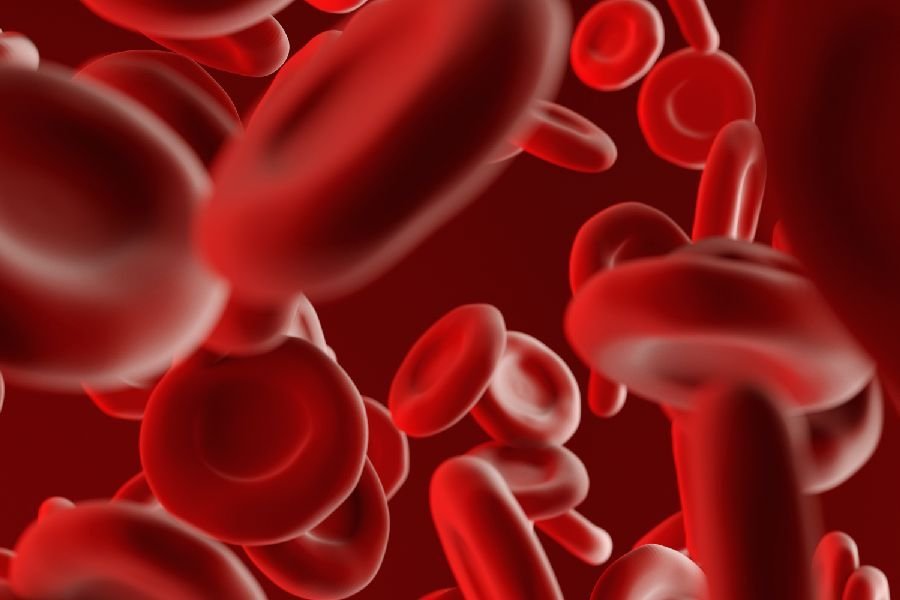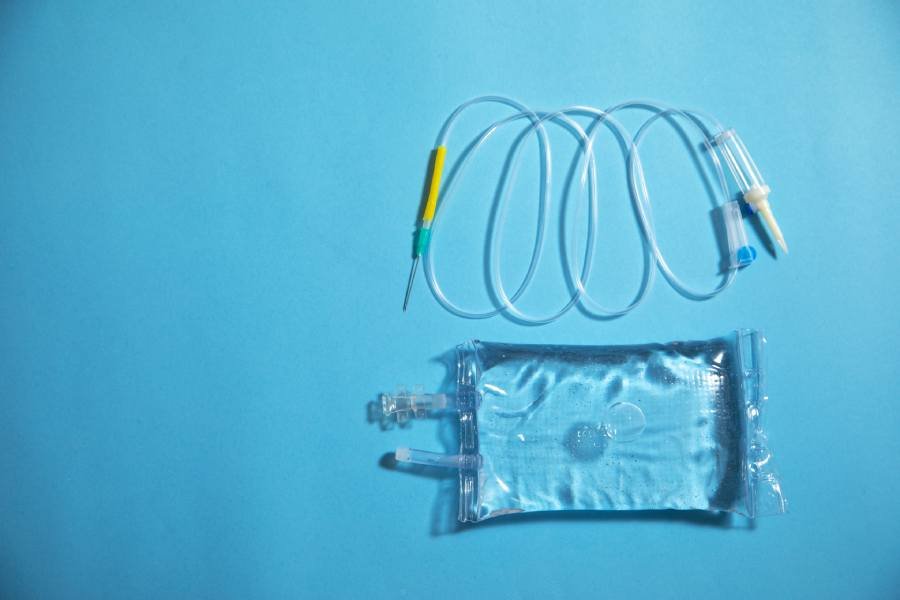Ozone therapy includes administering ozone gas in your body to treat a disease or a wound. But many wonder how effective and safe this procedure actually is and whether they should try it for themselves. In this article, you’ll discover how is ozone therapy administered.
Just like any other medical treatment, ozone therapy has pros and cons. Many wonder whether some methods of delivering ozone therapy can negatively affect overall health and cause long-term side effects.
The ozone treatment administration process is complicated ,and very specific. Healthcare professionals and medical scholars have been studying the right technique and approach to ozone therapy administration for years. Thus, they discovered some important facts.

Source: shutterstock.com/ Photo Contributor: Numstocker
How Is Ozone Therapy Administered?
The purpose of receiving ozone therapy is to increase the levels of oxygen in the human body. High oxygen levels promote healing through the replacement of damaged cells. So, how is ozone therapy administered?
There are a few therapeutic applications of ozone therapy. Many wonder how does ozone therapy work in treating different diseases. The application approach depends on the patient’s health condition and medical history.
Administering ozone therapy techniques should never involve inhaling gas. This may cause inflammation and build-up of fluid in a patient’s lungs. Thus, there are other methods of ozone therapy administration that are considered safe.
Skin application
Not all patients react to medical procedures in the same way, and many may wonder how to get ozone therapy to work. One way is applying the ozone gas directly to the skin tissue by exposing the affected area.
If the purpose of getting ozone therapy is to heal a wound, healthcare providers apply ozone solutions to your skin. But they also have to ensure the process is safe for the patient’s health. Thus, they administer the ozone gas in a protective covering.
Gas blowing
A very controversial method of administering ozone therapy is blowing gas into your body. The ozone gas is typically administered through the patient’s ear canal or rectum. Sufficient research is lacking to prove that this technique is safe and effective in treating wounds or diseases.
Blood dissolvent
Internal disorders may be treated with ozone therapy, including HIV. But this process involves the intravenous administration of ozone gas. So, how does IV ozone therapy work?
Ozone gas is dissolved into a sample from the patient’s blood. Then, the blood and gas dissolvent is injected again into the patient’s body through an IV. This process is also called autohemotherapy.
Ingestion
Some people can’t handle the pain of ozone gas being administered through their rectum or a large needle through an IV. Thus, they ingest it in their bodies by consuming ozone gas dissolved in water or a small amount of oil.
Muscle injection
In addition to blood being mixed with ozone gas, the ozone treatment administration process can be carried out by using an intramuscular injection. In such cases, ozone gas is mixed with oxygen before it’s administered to the patient’s body.
Additional methods of ozone therapy administration
When patients experience disorders connected to their joints, they receive ozone gas in their joints with a needle. Diabetic wounds are closed with the bagging method of ozone therapy administration. Some even use ozone water for external applications.
Benefits of Ozone Therapy
Ozone therapy has been used for many years. There are even products claiming to provide ozone treatments. But their effectiveness has yet to be proven. Before receiving ozone therapy, patients should always consult their healthcare providers to ensure it’s safe for their unique situation.
Although the FDA does not support ozone therapy, many people still frequently use it. Numerous healthcare professionals and medical scholars have researched the effects of ozone therapy. Yet they received mixed results. But many outcomes have shown that it might be effective if used properly.
Studies show that ozone therapy may be used to treat certain diseases, such as arthritis. Thus, let’s examine the additional benefits it may provide for the overall health and well-being of patients:
Immune system improvement
Ozone therapy may promote faster healing by boosting the immune system. It increases the amount of oxygen in a patient’s body and repairs damaged cells. Thus, it may reduce inflammation. Also, it might activate the body’s antioxidant and immune systems.
Protection against bacteria
Medical ozone was used as a disinfectant of medical equipment for many years. Thus, it has the power to wipe everything clean and prevent bacteria from sticking to the surface. But research shows that it may fight against viruses, infections, and bacteria in the human body.
Ozone therapy may prevent fungi from continuing to grow in your system. Thus, it makes it difficult for them to survive. It is strong enough to break through the cells, destroy bacteria, and block their operation.
Better blood circulation
Ozone therapy may increase the formation of white blood cells to fight against infections. But it may also stimulate the growth and function of red blood cells. Thus, it should create more oxygen in the body and promote better blood circulation.

Source: shutterstock.com/ Photo Contributor: Vladimir Zotov
Possible Drawbacks of Ozone Therapy
The idea of ozone therapy treating many diseases is promising. But many researchers discovered that ozone gas is unstable. Its effects on the human body are unpredictable. Thus, patients must be extremely careful when using ozone therapy.
Healthcare providers emphasize the importance of proper usage when it comes to ozone therapy. Ozone gas should be used in the right amount. Only trained professionals should administer it to avoid inhalation.
The FDA deems ozone therapy inhalation as very dangerous. It may irritate the lungs, making it difficult for the patient to breathe. Thus, this medical treatment comes with possible drawbacks.
The negative effects of ozone therapy usually appear as a result of using the intravenous treatment at high doses and very often. Patients must know which administration procedure best fits their personalized health treatment plan.
Blocked veins
The creation of air bubbles during IV ozone therapy is one disadvantage of this treatment. It causes blocked arteries or veins. This condition is called air embolism. It may result in the patient suffering from a heart attack or a stroke.
Pain
Patients have reported that ozone gas being blown into their rectum is extremely painful. It may cause cramping and serious discomfort, which are the reasons why many people avoid getting this type of treatment.
Inhaling ozone gas
Healthcare providers approach ozone therapy administration very seriously. But they can unintentionally expose the patient to low doses of ozone gas. Inhaling ozone gas is extremely harmful and can damage the patient’s respiratory system.
The most common cases of patients inhaling ozone gas involve their attempt to administer it themselves. But only healthcare professionals are aware of the precision involved in ozone therapy administration and advise against at-home experimentation.
Patients who inhale ozone gas initially feel their eyes burning and experience a tough headache. They may start coughing or feel nauseous after a few minutes of inhaling it. The worst part about it is that this mistake can cause long-term side effects, such as lung diseases and asthma.
Should You Get Ozone Therapy?
Unfortunately, ozone therapy hasn’t been tested in many clinical trials involving humans to determine its levels of safety and efficiency. Doctors explain ozone therapy’s possible risks and rewards before administering it to patients.
Due to those reasons, ozone therapy is still considered an alternative treatment for certain diseases and wound healing. But that doesn’t mean you shouldn’t get it if your healthcare provider advises you to do so.
Medical personnel can recommend a safe dosage and administer it the right way. They can also clarify which diseases ozone therapy fights against, and you can decide whether it’s the right option for your health condition.
How Much Does Ozone Therapy Cost?
Determining the exact cost of ozone therapy can be tricky because it’s based on the duration of the treatment and your unique situation. One important thing to note is that insurance companies don’t cover ozone treatments because they see it as an experimental therapy.
Usually, ozone therapy treatments cost between $100 and $500. The most cost-effective ozone treatment is muscular injection because it involves the usage of a very small amount of ozone.
Some patients need only a few ozone therapy sessions, while others require more extensive care, increasing the treatment cost. The price of ozone therapy also depends on the cost of living in the area the treatments are administered in.
The effects of ozone therapy may be long-lasting, which makes it worth the try among many patients. But its effects are still not understood completely in the medical world, and healthcare professionals don’t guarantee that ozone therapy’s pros outweigh the cons.
Ozone Therapy Near Me
The Drip provides energy-rich therapy using medical-grade ozone. Many clients reported seeing health benefits after receiving their treatments. They use IV ozone or medical O3 to help patients improve their health by increasing the oxygen amount released in their body tissues.
Their treatments may effectively kill pathogens, reduce oxidative stress, and calm autoimmune conditions. The treatments may also offer immune modulation benefits like energy improvement, better cell health, and mental acuity.
The Drip’s ozone therapy may increase the delivery of nutrients to the cells and organs and help them absorb better. It also aids in micro-circulation and may help the body eliminate unwanted toxins and fight aging symptoms.
It may enhance overall performance and promote wound recovery. Most clients notice the benefits of their ozone therapy after a few treatments. But The Drip’s team recommends at least five sessions to witness maximum improvement.
They can come to your home and deliver the best and safest IV therapy. Patients can customize numerous IV cocktails based on their needs and health conditions. Replenish your body today and bring back your natural skin glow with The Drip!
They are a mobile IV service based in Central Arizona. Thus, don’t hesitate to contact them if you live in one of the following locations. They serve in Chandler, Gilbert, Mesa, Phoenix, Scottsdale, Tempe, San Tan Valley, and Queen Creek.

Source: shutterstock.com/ Photo Contributor: likl
Frequently Asked Questions
Can I experience flu-like symptoms from ozone therapy?
Some patients have reported experiencing the Jarisch Herxheimer reaction after receiving ozone therapy. This condition causes flu-like symptoms because ozone therapy is known for easing inflammation and fighting against bacteria and viruses.
Does ozone therapy treat diabetes?
One side effect of diabetes is the appearance of wounds. Studies show that ozone therapy may efficiently treat wounds and promote faster healing. It may also reduce inflammation and correct the oxidative stress in your body.
How should I prepare for ozone therapy?
Before committing to ozone therapy, consult your healthcare provider for advice on preparing for the treatment. Getting enough hours of sleep, drinking a lot of water and eating a healthy breakfast before receiving ozone therapy is very important.
Is ozone therapy used in dentistry?
Researchers have discovered that ozone water may act as an efficient disinfectant during certain dentistry procedures like root canals. It may also heal wounds, ease post-surgical pain, and treat gingivitis.
How can ozone therapy benefit smokers?
Chronic obstructive pulmonary diseases may occur due to a patient’s long smoking history. A study discovered that an injection of ozone mixed with blood may improve a smoker’s quality of life and the ability to stay physically active without experiencing difficulty breathing.
Conclusion
Hopefully, you learned how is ozone therapy administered and whether it’s the right choice to treat your medical condition. Some ozone treatment techniques can be more effective than others, depending on your healthcare provider, body, and personal needs.
The most important thing to remember is to avoid inhaling extremely harmful ozone gas. Exposure to this substance may worsen your disease and cause long-term side effects that are difficult to battle, like breathing disorders.
Safety is the most important aspect of receiving any type of treatment, including ozone therapy. Prioritize your health by consulting a medical professional on the risks and benefits involved in receiving therapy with medical-grade ozone.




